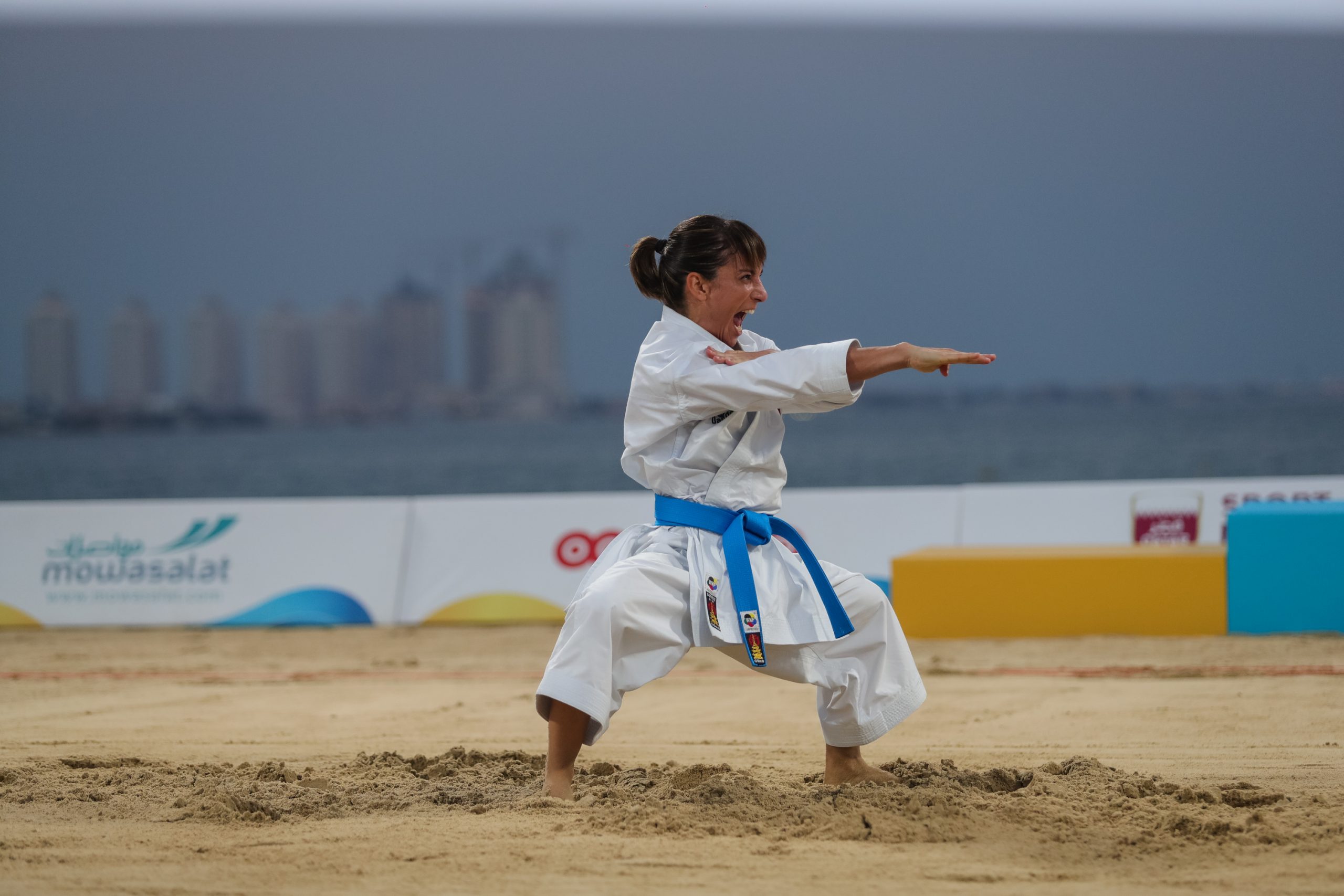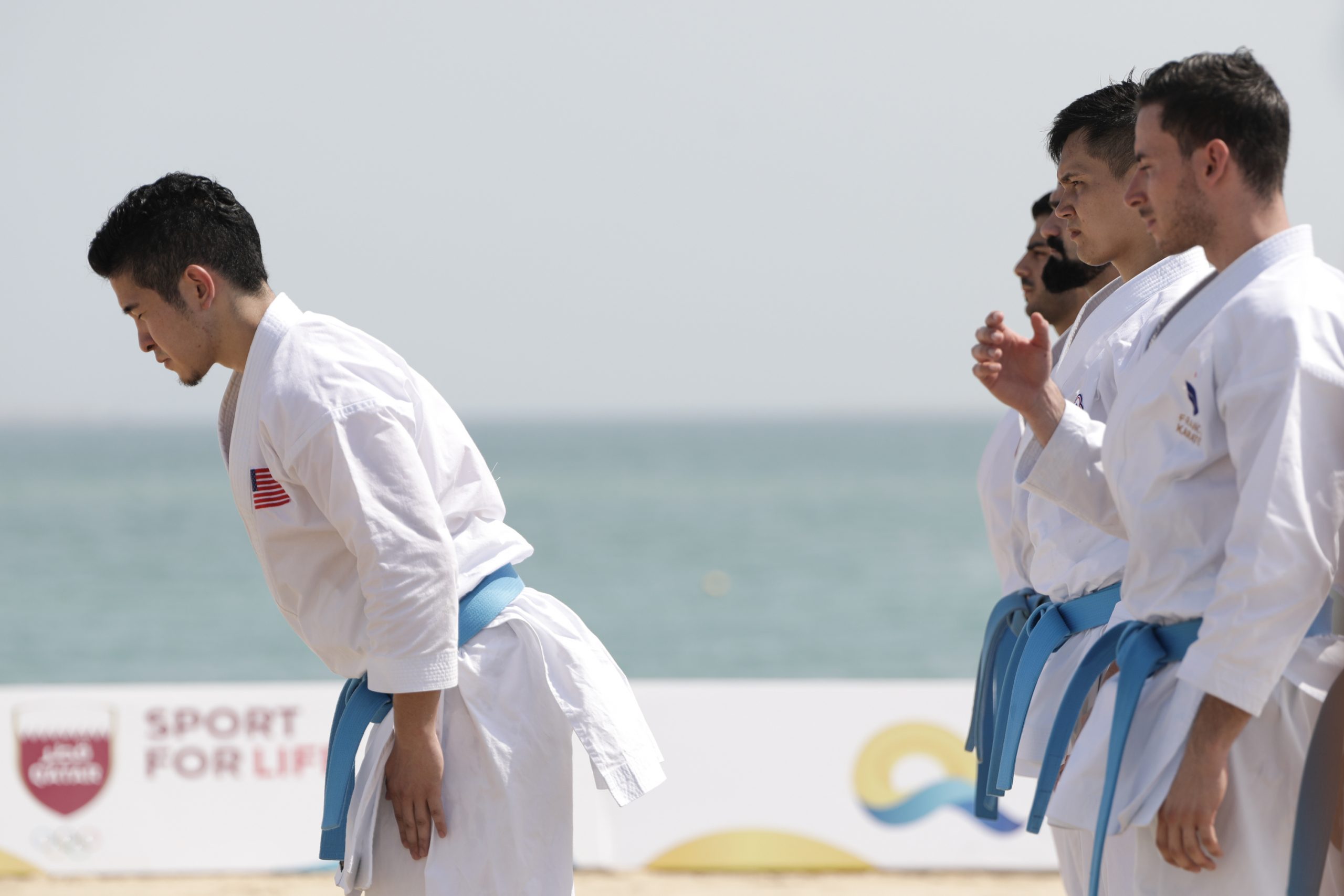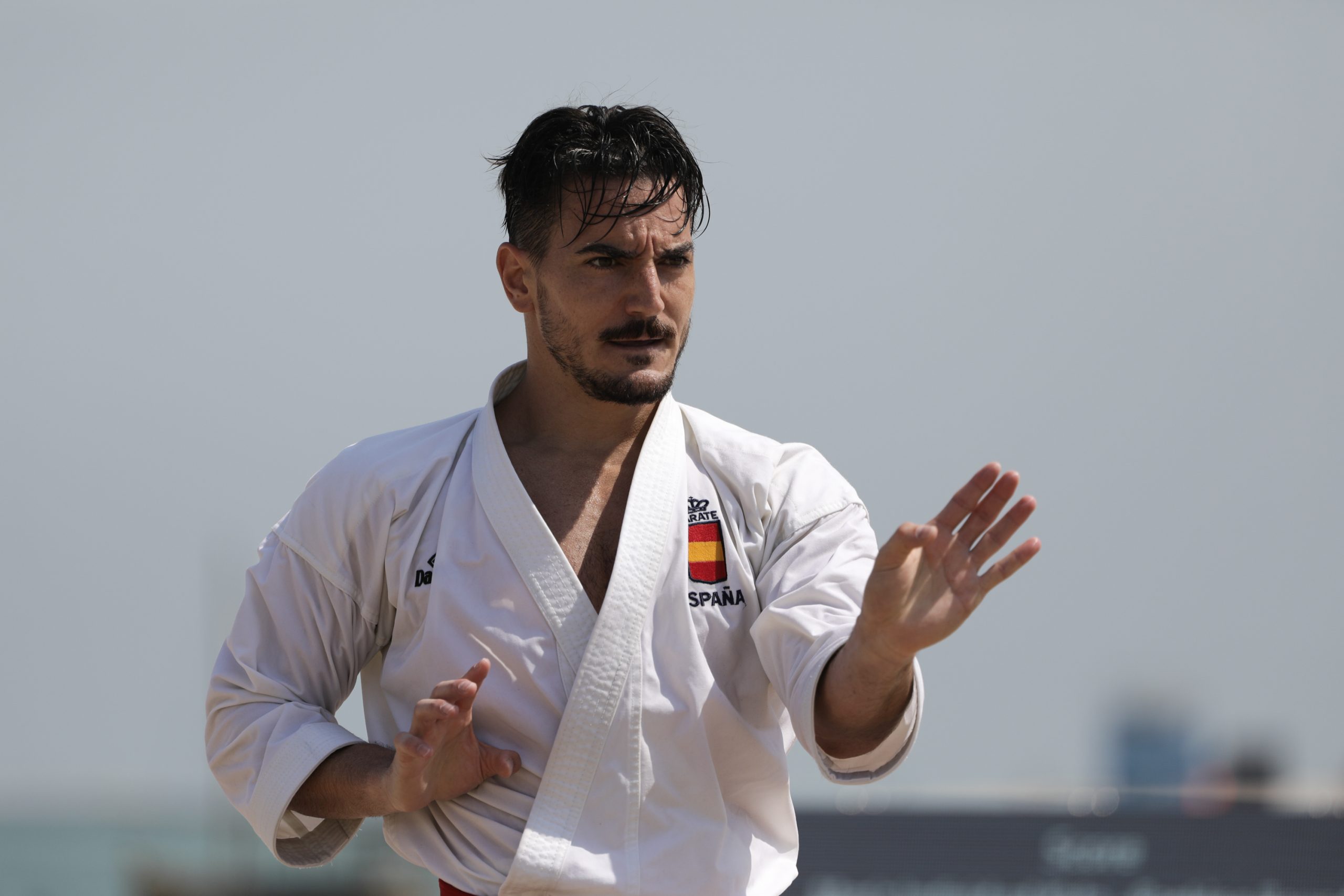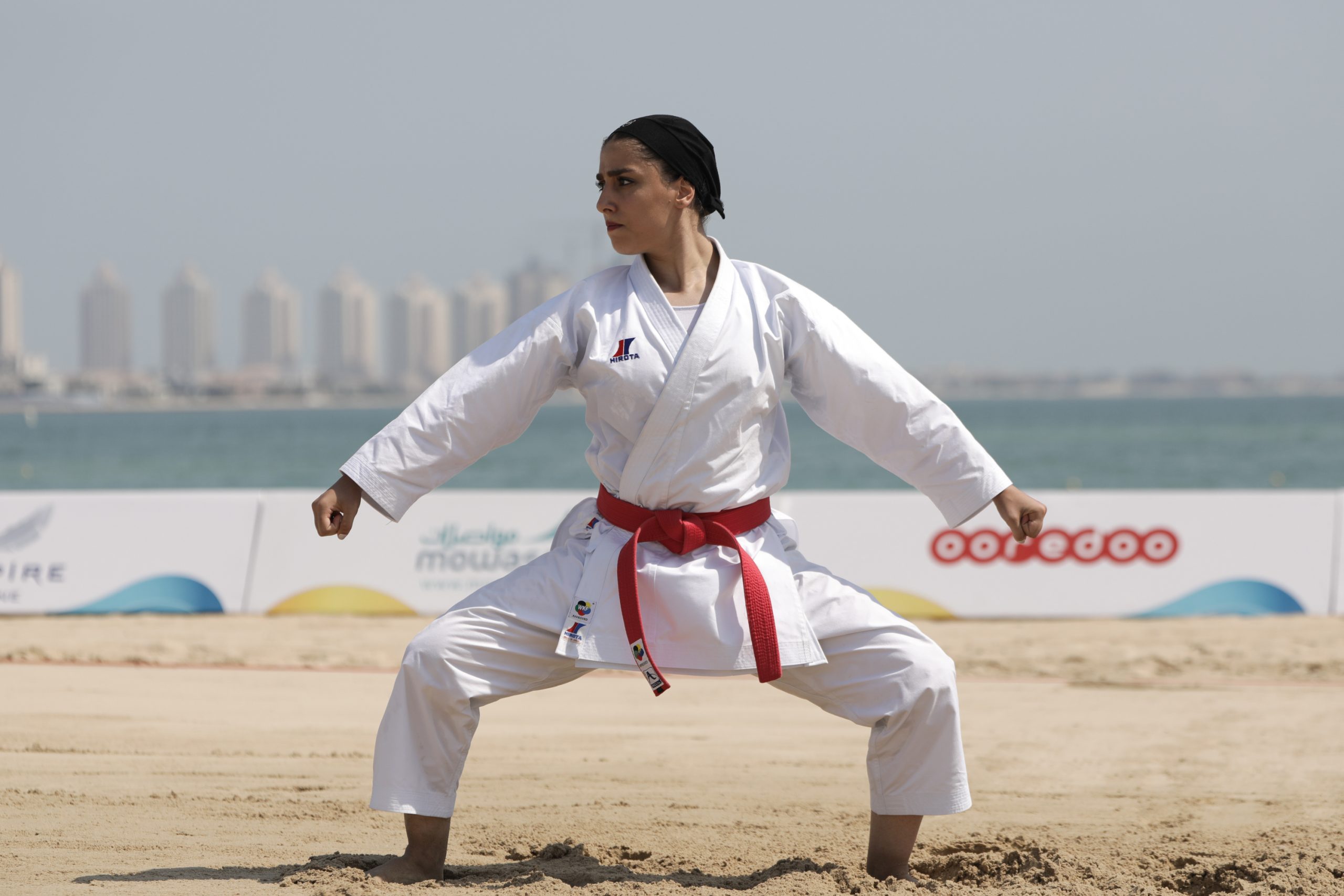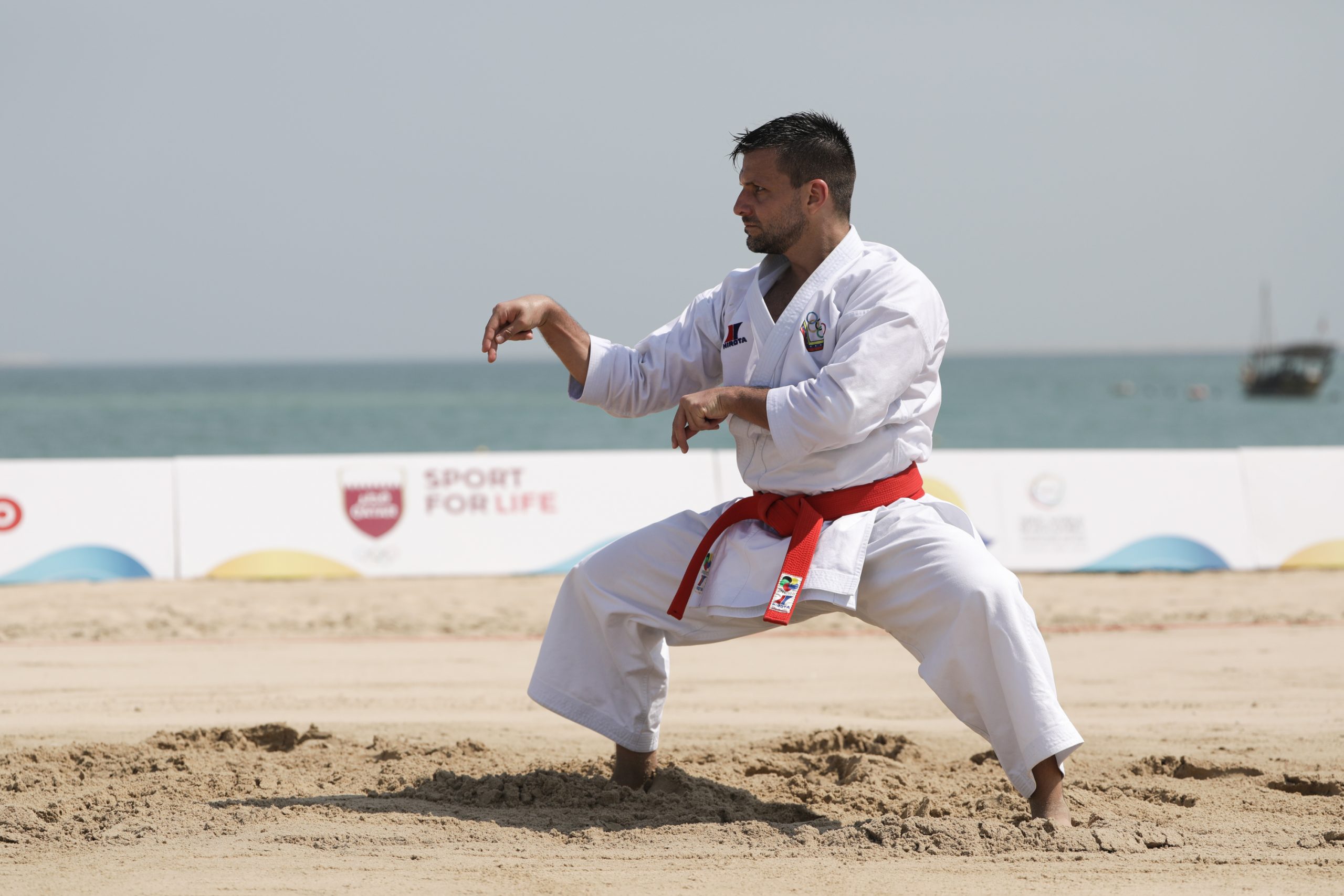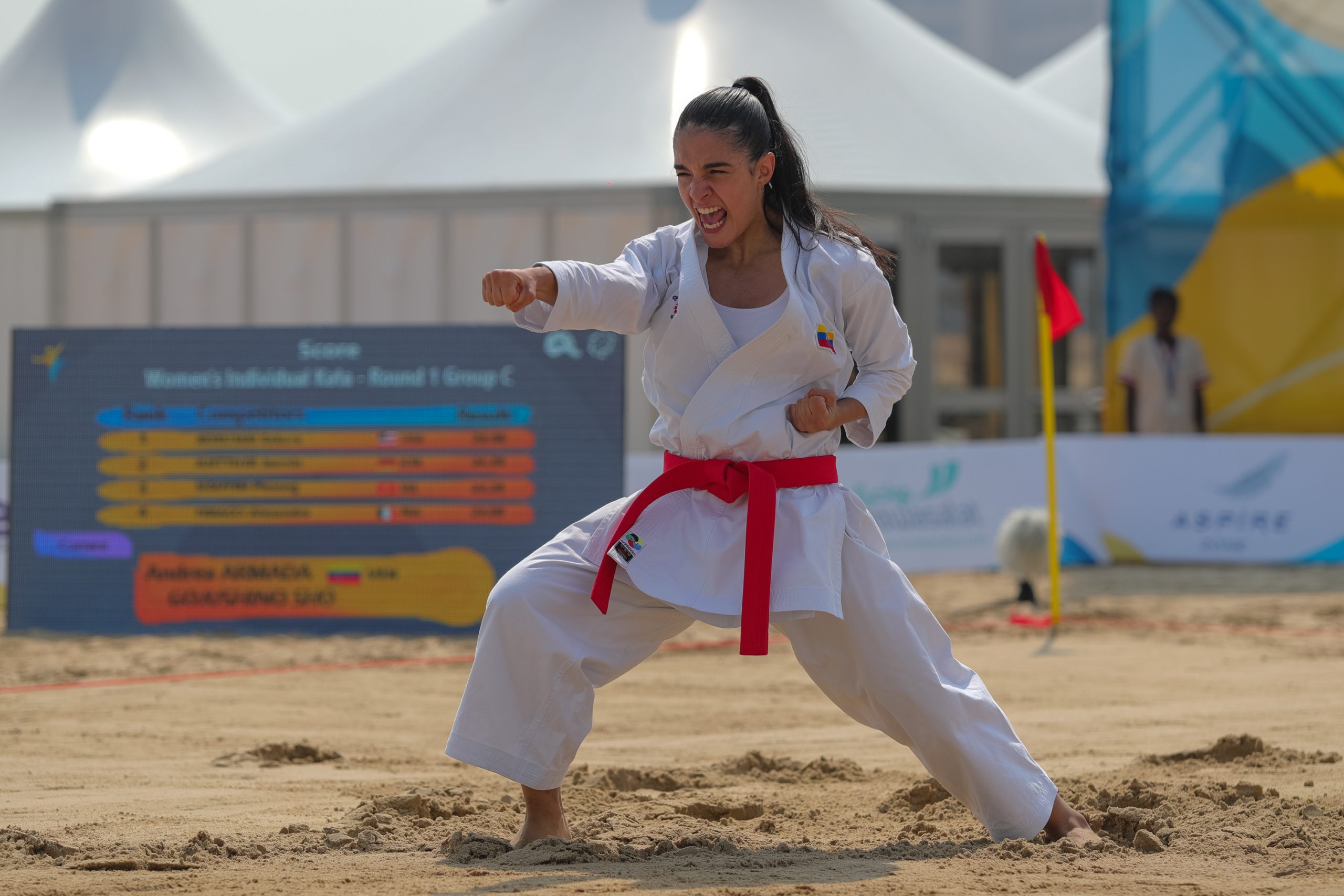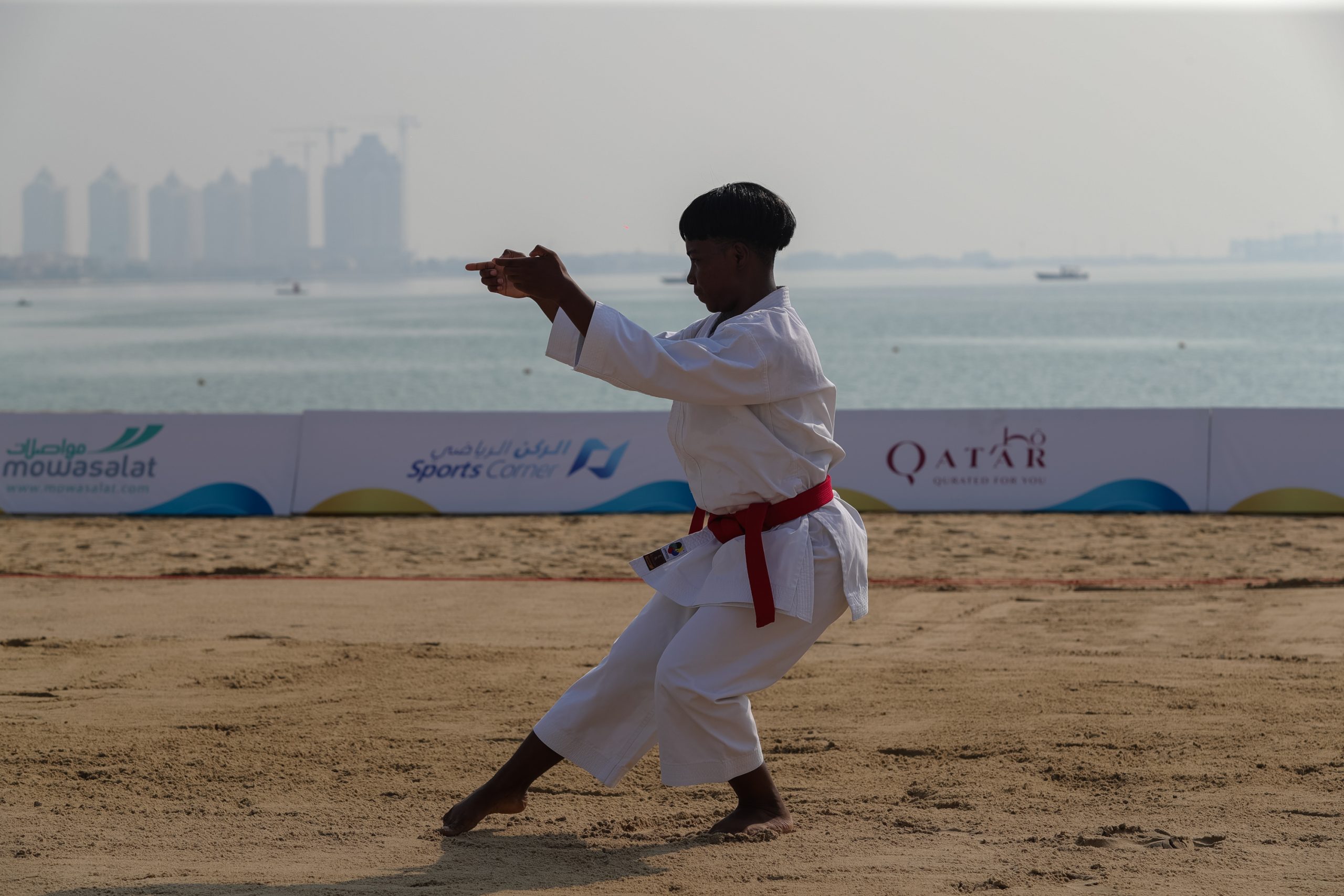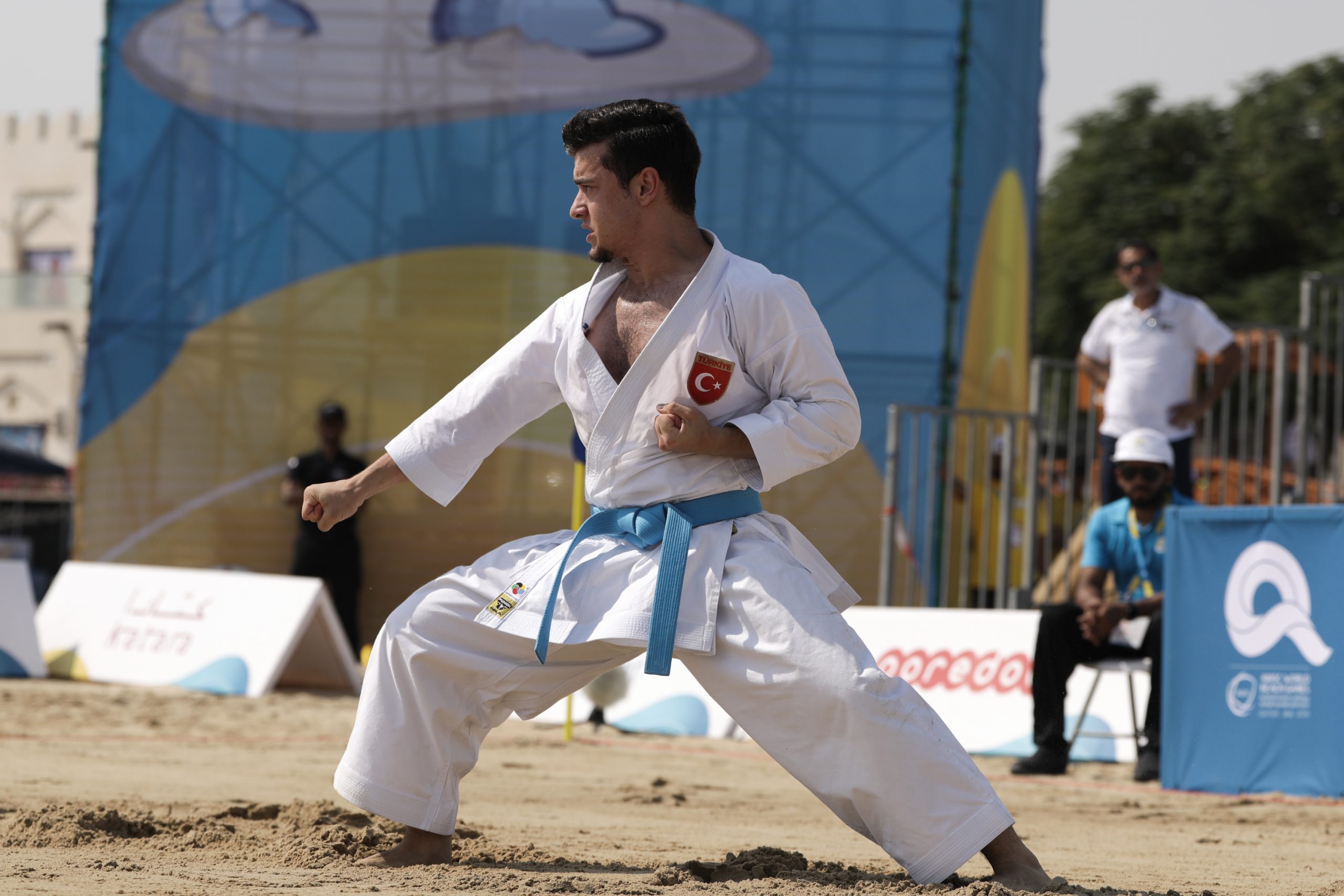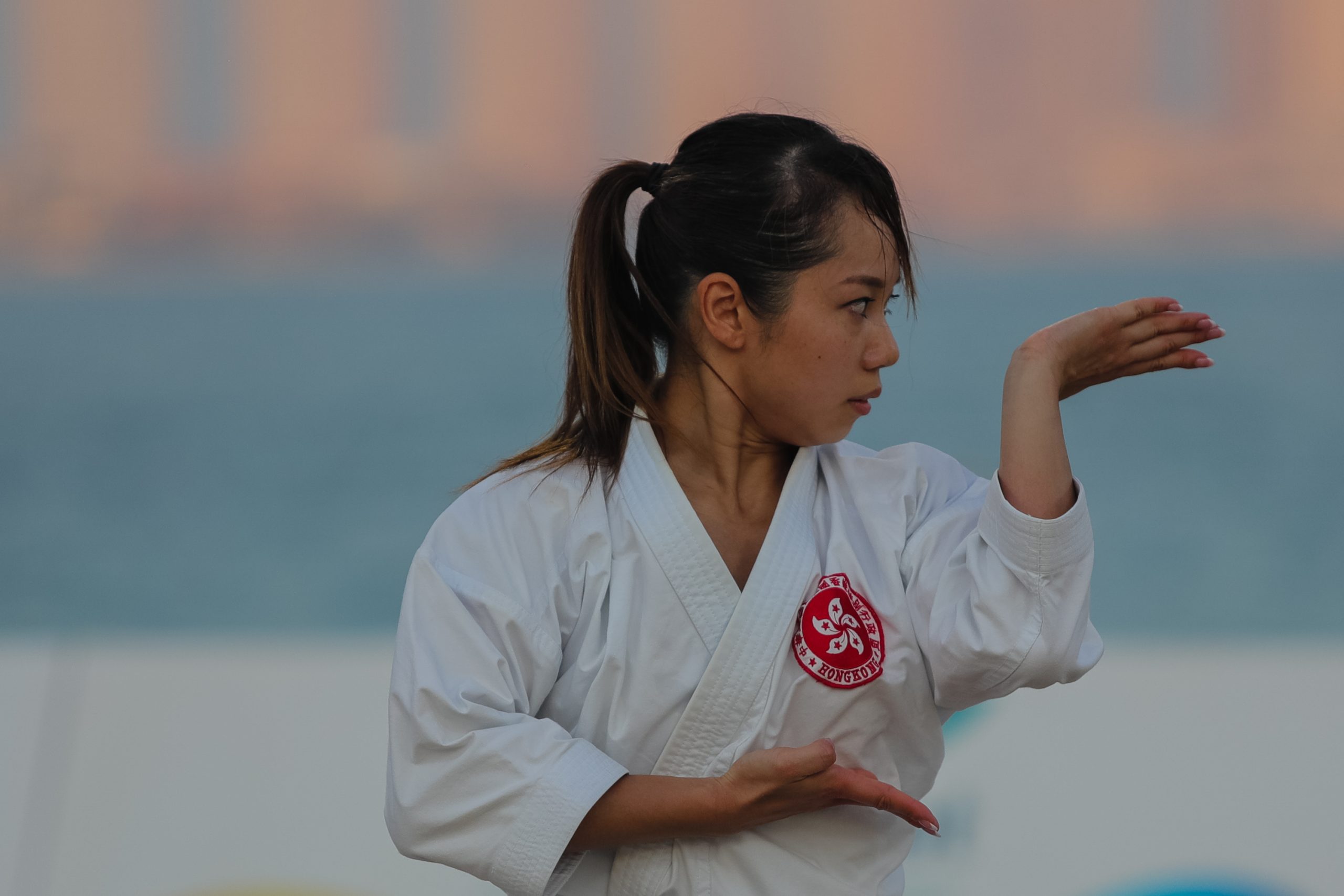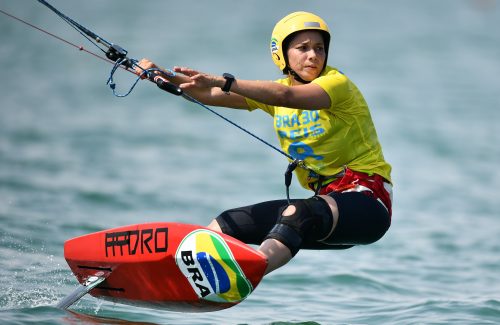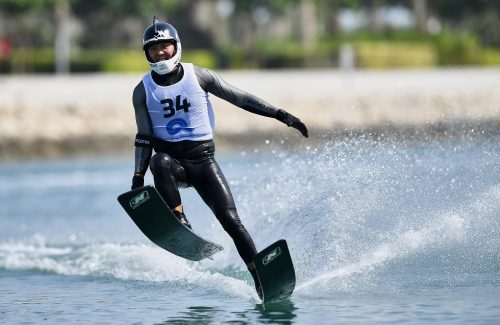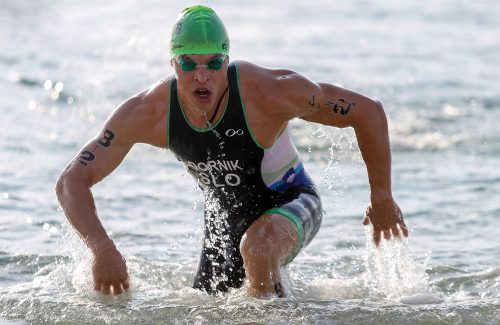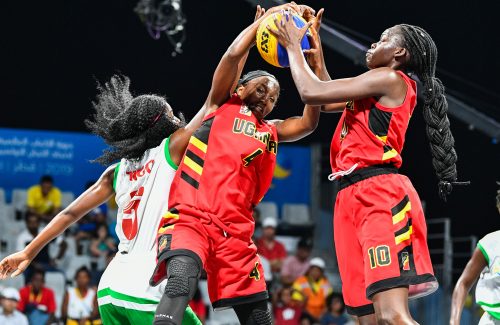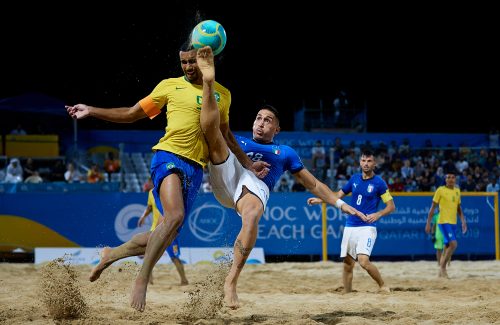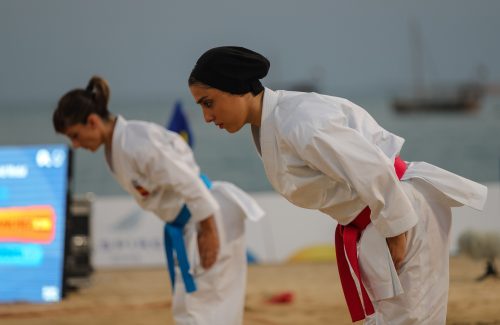Kata, a Japanese word meaning “form”, refers to a series of offensive and defensive movements targeting a virtual opponent.
Key factors include the strength, speed, rhythm, balance and power of strikes and kicks; the solidity, clarity, and force of movements; and the proper expression of the meaning of each technique. The kata are executed as a specified series of approximately 20 to 70 moves, generally with stepping and turning, while attempting to maintain perfect form
Karate kata is usually performed on an 8×8 metre non-slip mat with the competitors, who are seeded ahead of the event, to wear a white karategi. A kata competition can be either a team – of three – or an individual bout and the number of participants will determine the number of groups to be established for the elimination rounds. Competitors are not allowed to use the same kata twice in the same round, even in a tiebreaker. Competitors choose the kata they will demonstrate from 102 that are recognised by the World Karate Federation. A point-based system was adopted in January 2019 whereby the scores awarded by three of the seven judges are added then applied to a separate calculation formula to determine the winner.
Five significant steps in the history of Karate Kata
1980: Individual Kata appears at the World Karate Championships for the first time in Madrid (ESP).
1986: Team Kata appears at the World Karate Championships for the first time in Sydney (AUS).
2019: The new point-based system of evaluating the Kata competition is adopted thus replacing the traditional flag-based decision system. The new system modifies the format of the Kata competitions and drives Karate Kata to a new era.
2019: The first-ever Kata competition is held on a beach during the ANOC World Beach Games in Doha (QAT).
2020: Karate Kata appears at Olympic Games for the first time in Tokyo (JPN).





